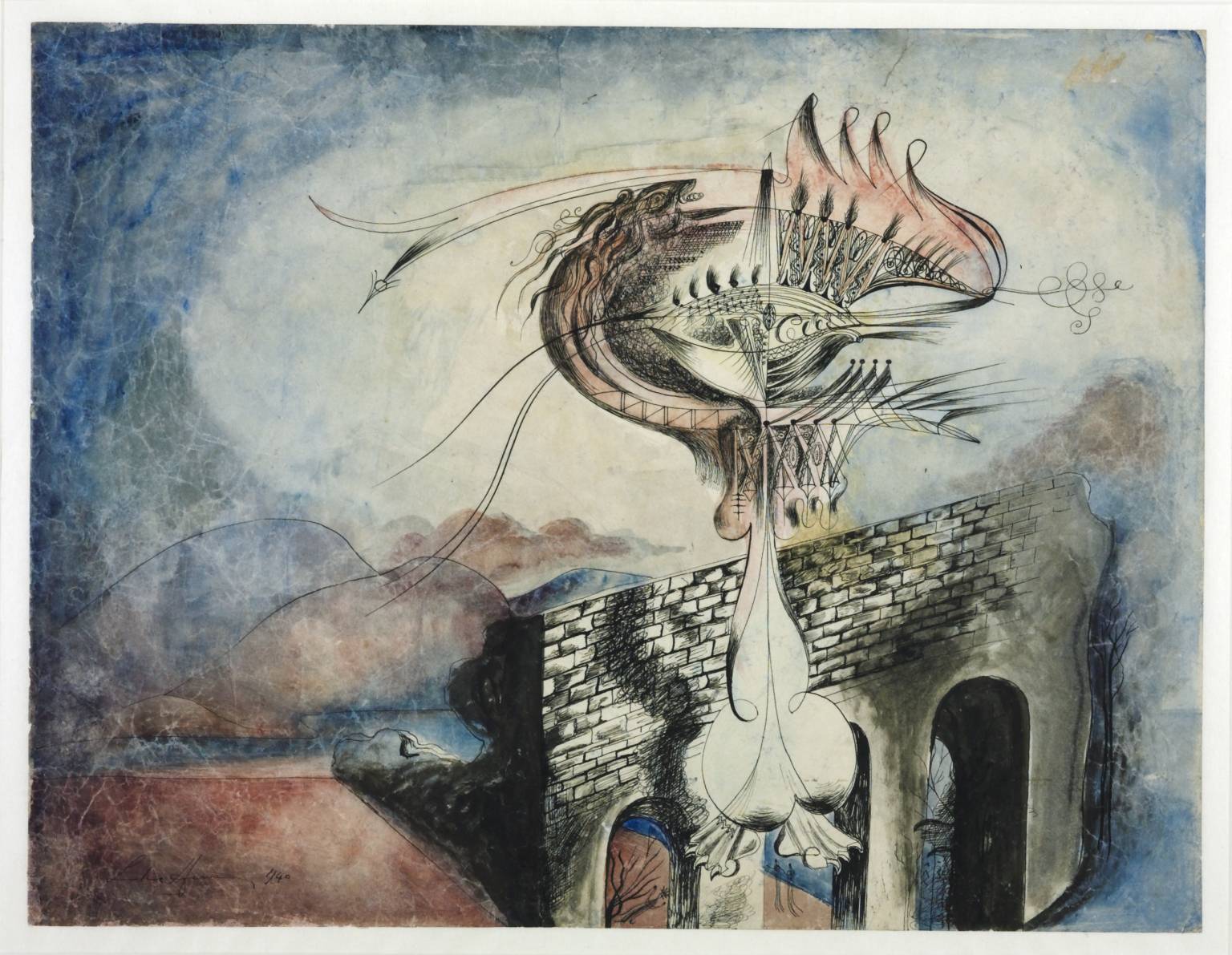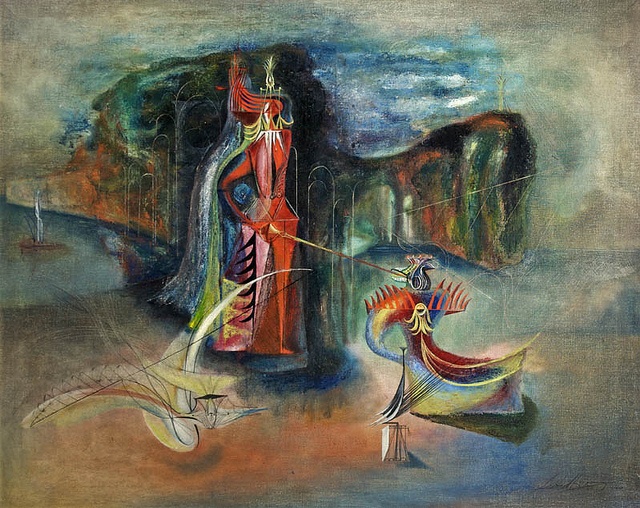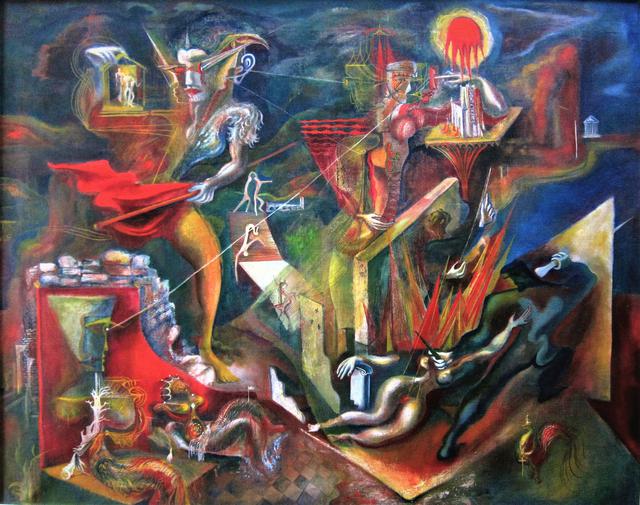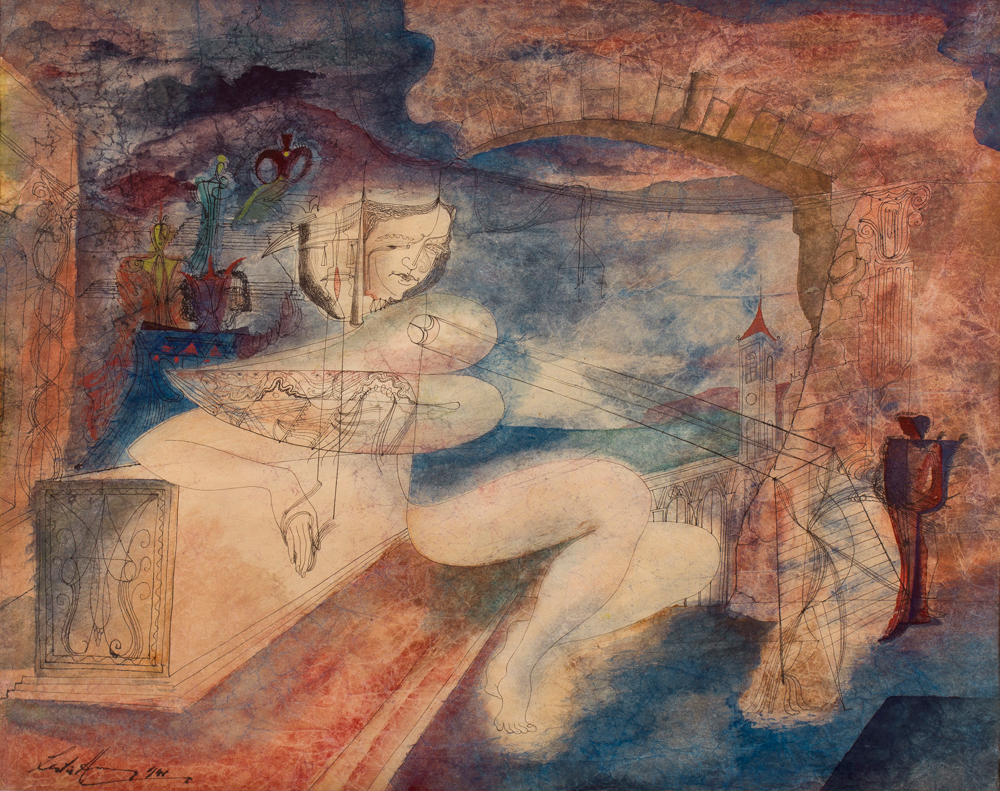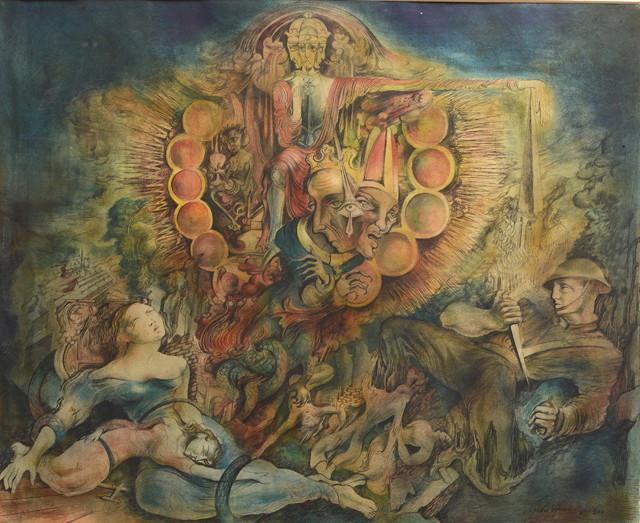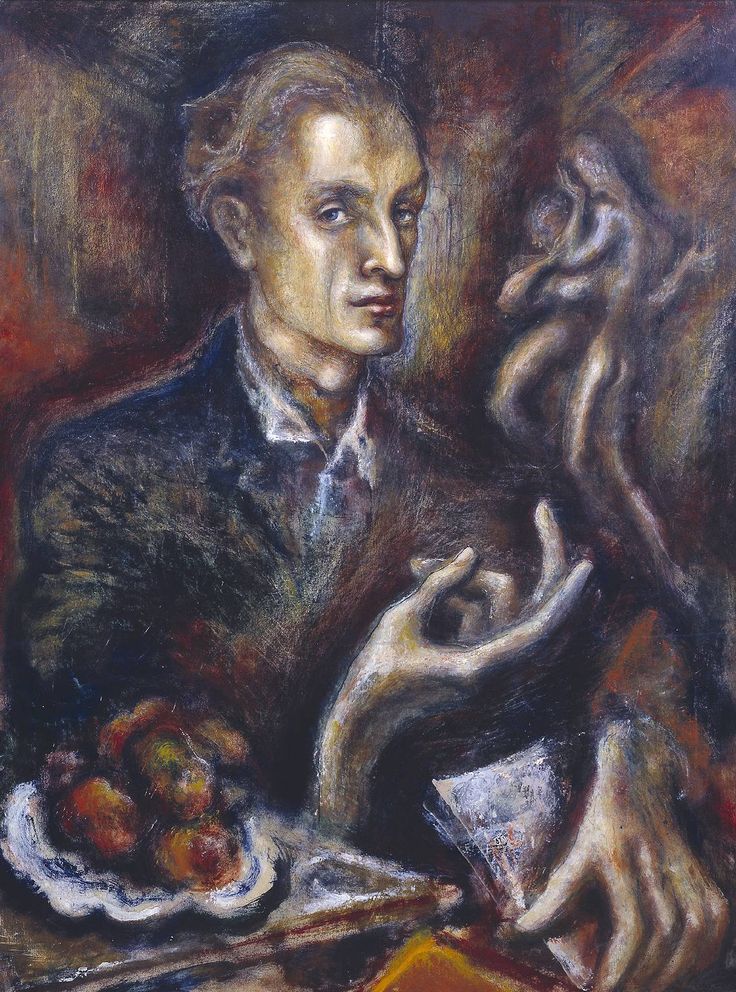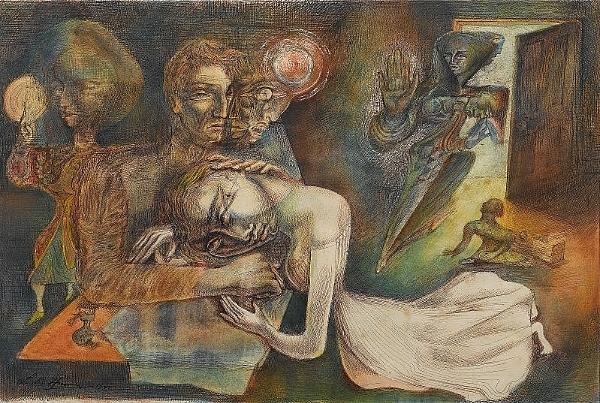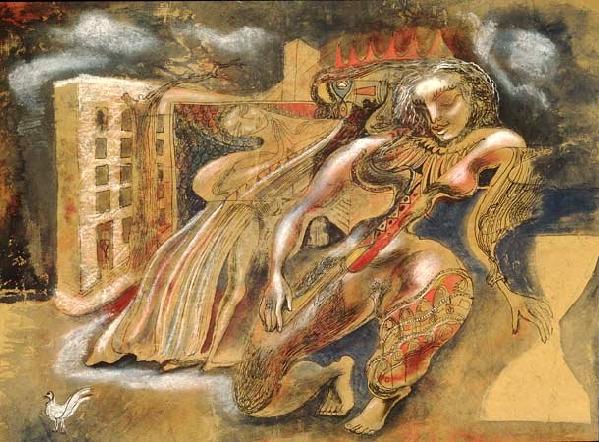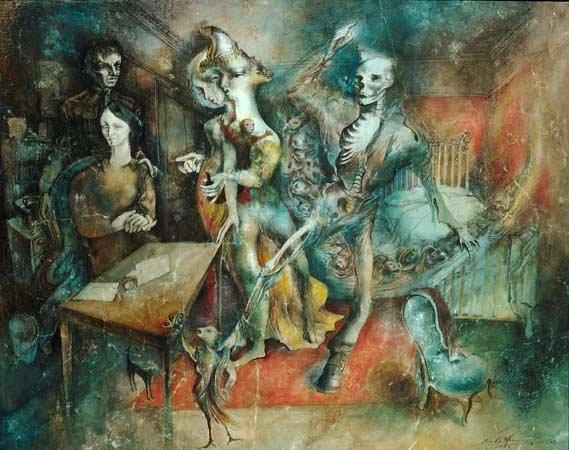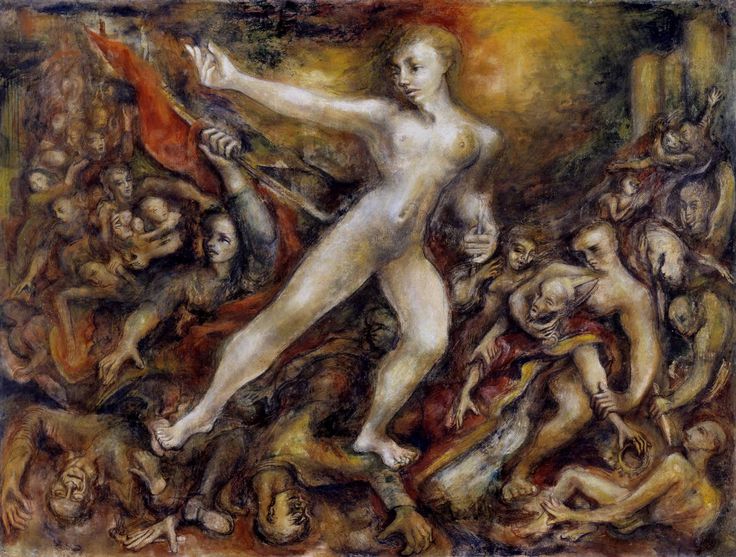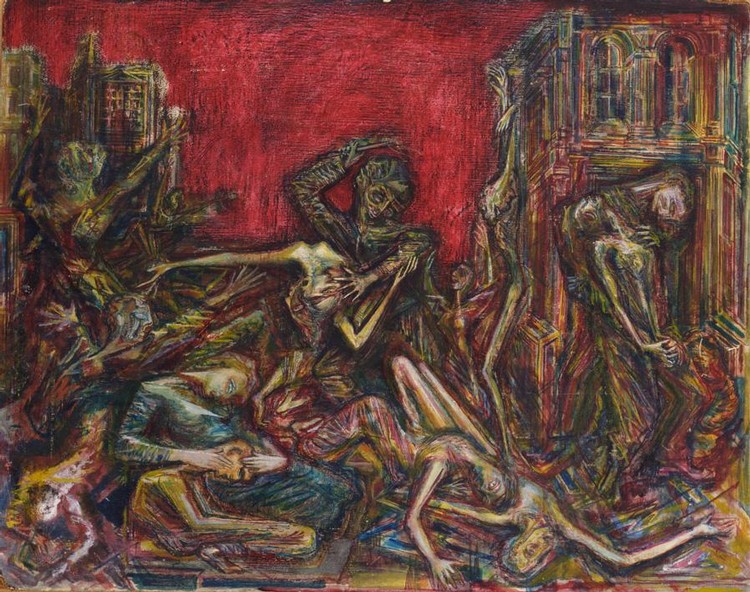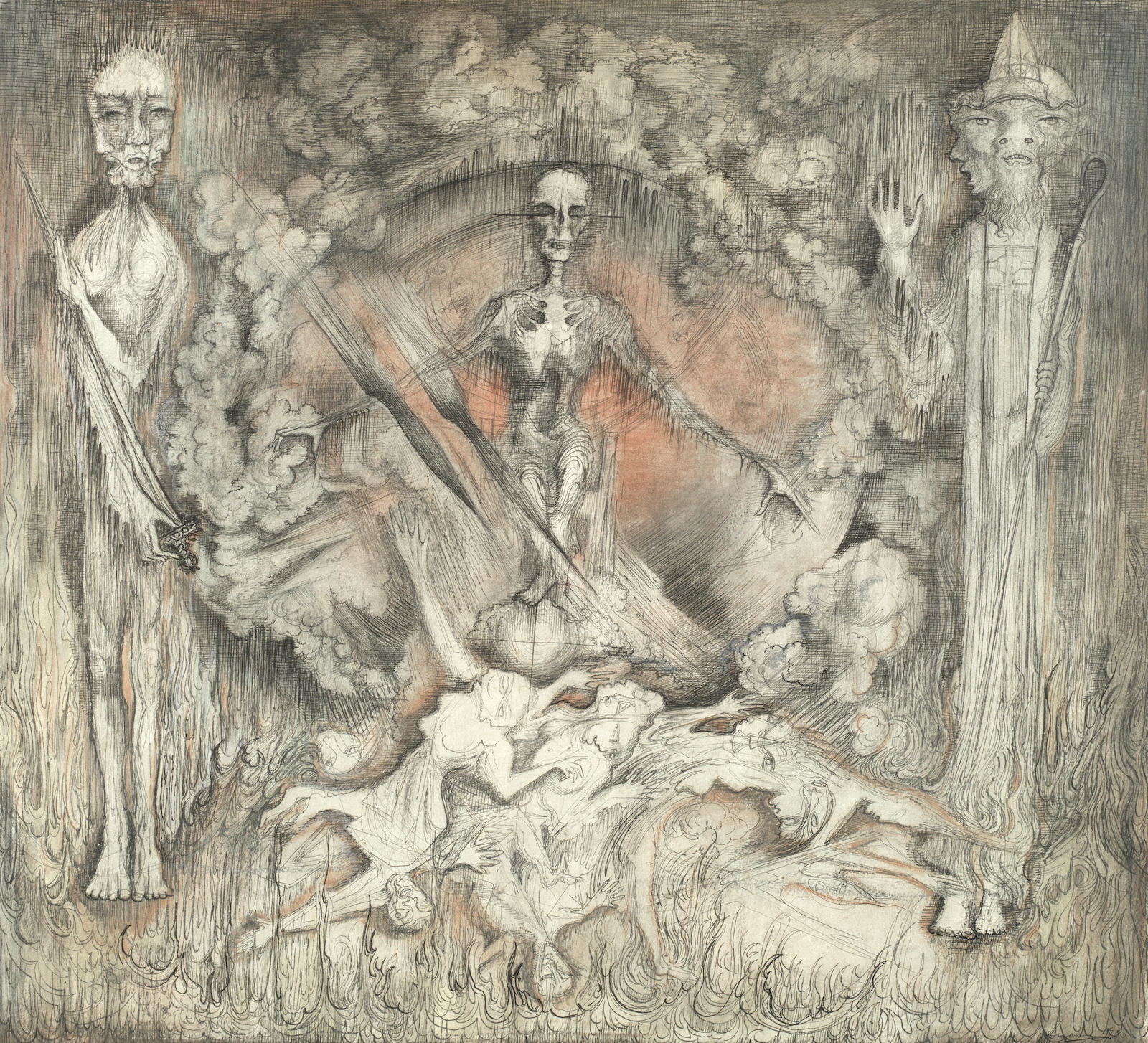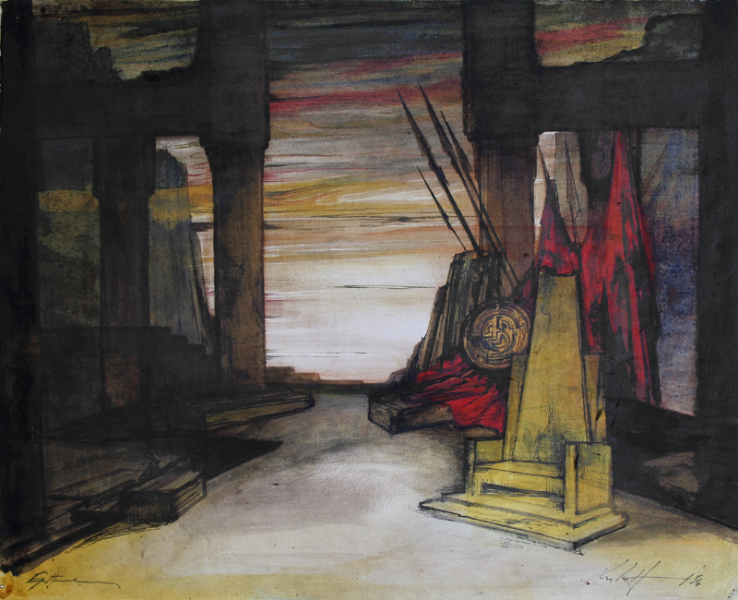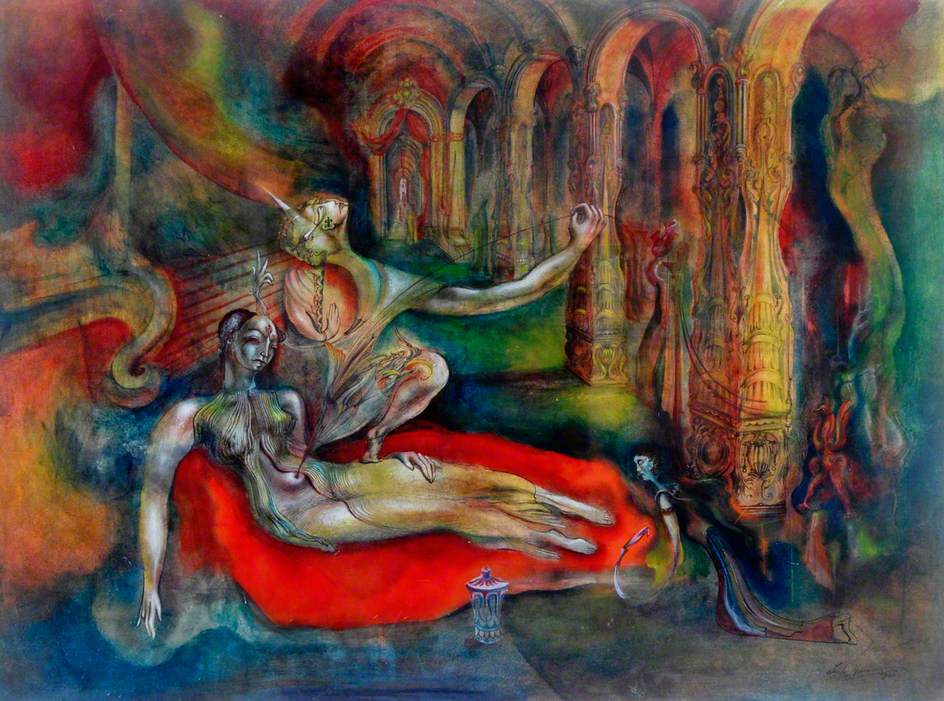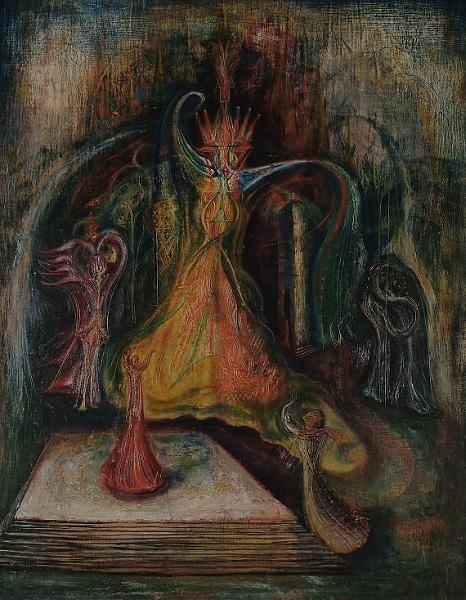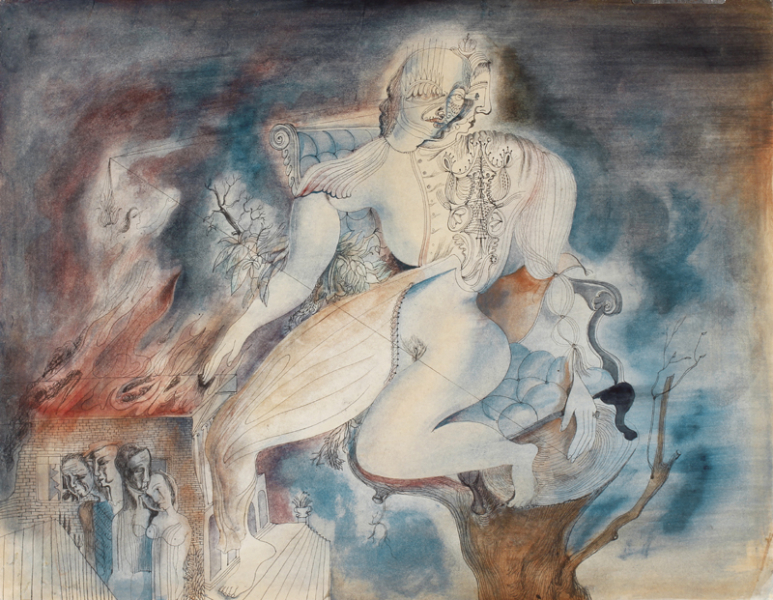





The Surrealism Website
Leslie Hurry (1909-78)
Leslie Hurry, a stage designer and painter, was born in London. He was educated at Haberdashers' Aske's Boys' School before, resisting pressure to join the family business, he was able, in 1925, to attend St John's Wood Art School, where he remained two years, winning a five-year scholarship to Royal Academy Schools.
His early professional work involved murals in his father's house and decorative schemes for a firm of brewers in their public bars. Then painted landscapes in Britain and Ireland which led to a first one-man show at the Wertheim Gallery in 1937.
In 1940-41 he produced two books of intricate automatic drawings that were exhibited at the Redfern Gallery, leading to his acclaim as an "ultra-surrealist".
Hurry was one of the Neo-Romantic group of artists in the 1940s, which included Graham Sutherland, John Piper, Keith Vaughan, John Craxton, Michael Ayrton, etc. In British art history, the term "neo-romanticism" is applied to a loosely affiliated school of landscape painting that emerged around 1930 and continued until the early 1950s. It was first labeled in March 1942 by the critic Raymond Mortimer in the New Statesman. These painters looked back to 19th-century artists such as William Blake and Samuel Palmer, but were also influenced by French cubist and post-cubist artists such as Pablo Picasso, André Masson, and Pavel Tchelitchew.
These days he is probably better known for his theatre designs. He regarded theatre designs preferable to teaching. However, they have overshadowed his paintings, which he considered to be his best work.

